Travel in Japan was an interesting experience for us from a culinary perspective, though maybe not for the typical reasons. One of us is a vegetarian (though willing to compromise when necessary, e.g., with broth), and we’re both aware enough of- and concerned enough about- the ethical issues raised by Japan’s overfishing that we deliberately didn’t consume a lot of seafood while we were there. Nevertheless, our food experience was pretty good overall. So this won’t be one of those “we ate raw item X!” posts.
So how well can vegetarians eat in Japan? Turns out, pretty well, again with the idea that there will probably be some compromise-and with the admission that we weren’t completely immersed in eating only Japanese food. One important thing to do is supplement what you can buy on the go with fruit and vegetables from grocery stores-and be prepared for really high prices (carrots, sprouts, and fruit juice seemed reasonable, though). Tofu is pretty widely available, though it’s generally more an ingredient than the main course.
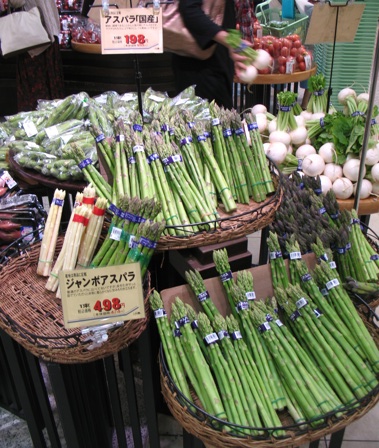
So breakfast in Japan is one of the things that we knew ahead of time what to expect. Not the traditional Japanese breakfast (rice, raw egg, miso soup, pickles, etc.), but a Westernized breakfast for people in a hurry. The main thing here: pastries.
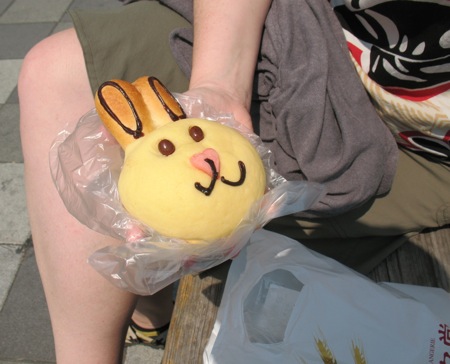
Japan is the land of awesome sweet breakfast pastries- many in the shapes of animals, some with protein in the form of beans, and others with incredibly intense green tea filling. A lot of the train stations had buns, making this a really convenient option. Grab a couple of these and a bottle of tea from a vending machine, and you’re good to go. Though finding a place to sit and eat can be a challenge- there were few benches around to sit and have a quick bite.

In Kyoto, our hostel had a breakfast buffet that we ate at twice, just to get a break from buns (yes, we probably did end up eating them too frequently overall). Our other big on-the-go breakfast option was onigiri- seaweed-wrapped rice balls with various fillings. Of course, this made for some starchy breakfasts…

Since we did a lot of walking, lunch was often on the go as well. Onigiri made an appearance there, as did a variety of other snacks. We actually ended up eating quite a few burgers, as as this vegetarian burger and pizza place in Kyoto:
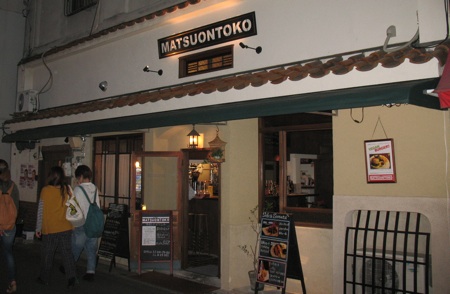
We had udon a few times, though there the broth clearly was made with meaty stock. But on cold days, it was nice to have.
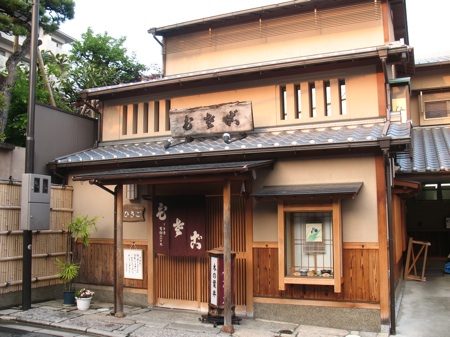
Pizza was another thing we had surprisingly often. Okay, three times in two weeks, but that’s way more often than we eat it at home. Luckily, Japanese pizza is much less heavy on cheese than American (burger patties are also much smaller). And we did get some interesting stuff, like a pizza with pickled vegetables and sake lees (the sweet leftovers from making sake). So we at least had some Japanese fusion food that time.

We did have sushi with fish twice at restaurants, and picked up some rolls with cucumber and plum paste to go at department stores twice for lunch. Department stores in Japan are an interesting experience, if only for the food options that many of them have- generally both sit-down restaurants and deli places (though again, the lack of seating is an issue with the latter). Shopping at outdoor markets is also an option.

Generally, our biggest meal of the day was dinner. This is probably a result of our travel style more than anything else. Overall, Kyoto was much more accessible both in terms of the variety of restaurants (again, one vegetarian and both staying generally away from seafood) and the availability of English-language menus (or at least menus with pictures). In Kyoto, we found a falafel place that was good, as well as this mostly-vegetarian buffet that was pricey but had a huge variety of delicious vegetable-containing options (and brown rice!):
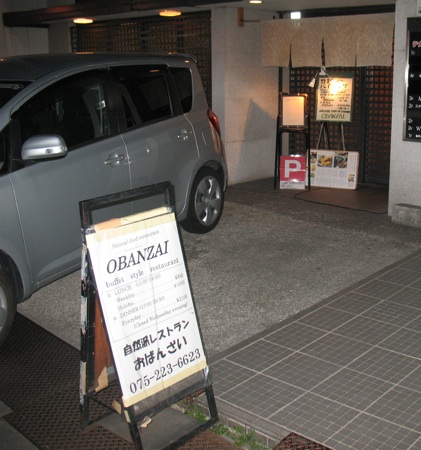
As I mentioned before, there were a lot of green tea products to try. One of our favorites was green tea custard, which we sampled just across the street from Ginkaku-ji in Higashiyama.
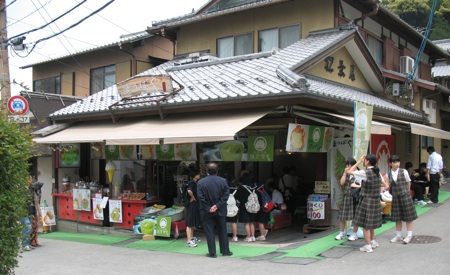
Another place we didn’t sample, in Tokyo’s Harajuku district, was the oddly-named “Grom,” which seemed to be a liberal establishment 🙂
